CHEST EXERCISE INTRODUCTION 
The chest is one of the major muscle groups in the human body, and developing a strong and well-defined chest is a common goal for many fitness enthusiasts. The chest muscles, primarily the pectoralis major and pectoralis minor, play a crucial role in various upper body movements, including pushing motions.
Here’s an introduction to chest exercises:
Importance of Chest Exercises:
- Functional Strength: A strong chest is essential for various daily activities, such as pushing objects or lifting weights.
- Aesthetic Appeal: Well-developed chest muscles can enhance the overall appearance and symmetry of the upper body.
- Balance: Working on the chest helps maintain muscular balance with other muscle groups, such as the back, which is essential for posture and overall strength.
Common Chest Exercises:
- There are several types of chest exercises that target the pectoral muscles from various angles and with different levels of intensity. Here are some common types of chest exercises:
Compound Chest Exercises:
- Bench Press:
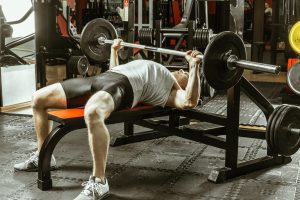
- Barbell Bench Press
- Dumbbell Bench Press
- Push-Ups:
- Standard Push-Ups
- Wide-Grip Push-Ups
- Close-Grip Push-Ups
- Decline Push-Ups
- Incline Push-Ups
- Chest Dips:
- Parallel Bar Dips
- Bench Dips
Isolation and Flye Exercises:
- Dumbbell Flyes:
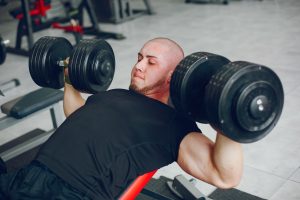
- Flat Dumbbell Flyes
- Incline Dumbbell Flyes
- Decline Dumbbell Flyes
- Cable Crossovers:
- High Cable Crossovers
- Mid Cable Crossovers
- Low Cable Crossovers
- Pec Deck Machine:
- Machine Flyes
- Dumbbell Pullovers:
- Performed with a dumbbell, targeting the chest and latissimus dorsi muscles.
Hybrid and Variation Exercises:
- Incline Bench Press:
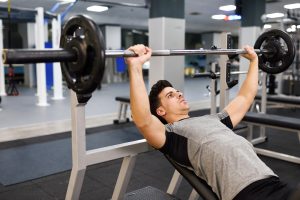
- Targets the upper chest more than the flat bench press.
- Decline Bench Press:
- Targets the lower chest more than the flat bench press.
- Landmine Press:
- Utilizes a barbell anchored at one end, providing a different pressing motion.
- Smith Machine Bench Press:
- A variation of the bench press using a Smith machine, offering a guided barbell path.
- Plyometric Push-Ups:
- Incorporates explosive movements to enhance power and muscle activation.
Stability and Unilateral Exercises:
- Single-Arm Dumbbell Bench Press:
- Performed with one dumbbell at a time, challenging stability and working each side independently.
- Push-Ups on Stability Ball:
- Adds instability, engaging core muscles in addition to the chest.
- One-Arm Push-Ups:
- Advanced variation of the push-up, targeting one side of the chest and requiring significant core stability.
These exercises can be incorporated into a comprehensive chest workout routine, varying the angles, grips, and equipment to target the pectoral muscles effectively and promote balanced development. As with any exercise program, it’s essential to prioritize proper form and technique to maximize benefits and minimize the risk of injury.
- Bench Press:
Tips for Effective Chest Training:
- Form: Always prioritize proper form to ensure safety and maximize muscle engagement.
- Range of Motion: Aim for a full range of motion to engage the chest muscles fully and avoid potential injuries.
- Progressive Overload: Gradually increase the weight or intensity over time to stimulate muscle growth and strength gains.
- Variety: Incorporate different exercises and variations to target the chest from various angles and stimulate muscle growth.
Conclusion:
Incorporating chest exercises into your fitness routine can help you build strength, improve muscle definition, and enhance your overall physique. As with any exercise program, it’s essential to consult with a fitness professional or trainer to ensure that the exercises are performed correctly and safely.
Benefit of chest exercise
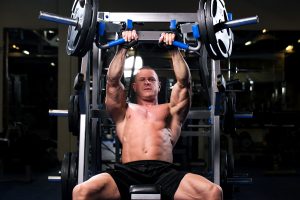
Chest exercises offer a range of benefits, both functional and aesthetic. Here are some key benefits of incorporating chest exercises into your fitness routine:
Functional Benefits:
- Improved Upper Body Strength: Chest exercises, particularly compound movements like the bench press, can significantly enhance overall upper body strength, aiding in daily activities that require pushing or lifting.
- Enhanced Pushing Power: Developing a strong chest can improve your ability to push objects, whether it’s a heavy door, a loaded shopping cart, or during athletic activities like pushing an opponent in sports.
- Better Posture: A well-developed chest can contribute to improved posture by providing support to the upper body and balancing the muscles around the shoulder and back region.
- Reduced Injury Risk: Strengthening the chest muscles can help stabilize the shoulder joints, potentially reducing the risk of injuries, especially in activities that involve overhead movements or lifting.
Aesthetic Benefits:
- Muscle Definition: Chest exercises help in building and defining the pectoral muscles, contributing to a more sculpted and toned appearance of the chest area.
- Improved Symmetry: Developing a balanced and well-proportioned chest can enhance overall upper body symmetry, creating a more aesthetically pleasing physique.
- Clothing Fit: A well-developed chest can improve the fit and appearance of clothing, especially shirts and tops, providing a fuller and more muscular chest profile.
Other Benefits:
- Increased Metabolism: Chest exercises, like other resistance training activities, can boost metabolism and promote fat loss, as muscles are metabolically active tissues that burn calories even at rest.
- Mental Well-being: Engaging in regular chest exercises can have positive effects on mental well-being, promoting feelings of accomplishment, confidence, and overall satisfaction with one’s physical appearance and capabilities.
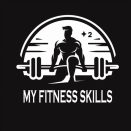
Good,💖💖